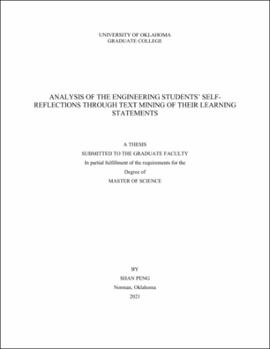| dc.description.abstract | At the University of Oklahoma (OU), AME4163: Principles of Engineering Design which is based on the “Design, Build, and Test” approach and has an experiential learning structure, is a course for preparing senior undergraduate students with ability to adapt quickly to new circumstances as junior engineers. In order to measure students’ learning effectiveness, instructors require the students to write down their learning statements using a triple construct including experience, learning, and value. The learning statements submitted by the students are the linguistic embodiment of their engineering competencies through reflection on doing which is anchored in Kolb’s experiential learning cycle. There are two main issues facing instructors in manually assessing students’ learning statements: 1) labor-intensiveness due to the huge amount of text, and 2) subjectivity due to the instructors’ personal judgments.
In this thesis, the hypothesis is that through the exploration in the text mining program, the things as follows facilitate instructors analyzing students’ learning statements.
- Proposing a text mining framework to answer the development question.
- Formalizing the heterogeneous text contents and building the schemed database in the framework
- Adapting the machine learning methods to analyze and predict the data source.
- Visualizing the text mining results for gaining more insights from the textual documents.
- Automating a text mining program to integrate the functionalities of the framework.
The intellectual merit of this thesis is the realization of the text mining program to gain insights from the linguistic learning statements. By incorporating machine learning methods to analyze the heterogeneous text contents, the text mining program can be updated by experiments, evaluation, and users’ feedbacks. Through the improvement of the text mining program, more and more visualization results and the corresponding insights can be generated. | en_US |
